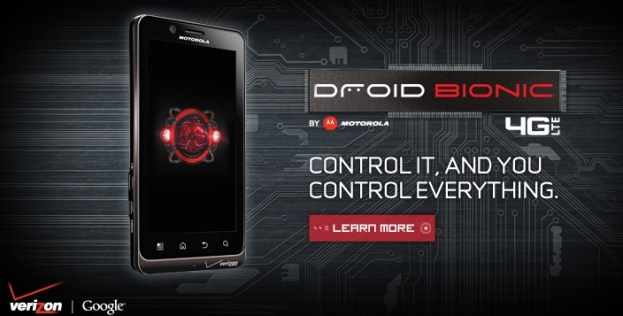
The Droid Bionic is finally here. After months of speculation and leaked ads, Verizon’s first dual-core 4G LTE phone is now available for order. The Bionic was first announced in January, but was delayed over and over again due to issues with design, Verizon’s 4G network, and performance. Many of the first 4G devices had poor battery life and other issues stemming from the new high-speed network.
Despite being nine months old, the Droid Bionic still packs a punch. The device has a 4.3-inch 960×540 pixel screen, 1GHz dual-core processor, 1GB of RAM, an 8MP camera capable of 1080p video recording, 16GB of internal storage, 16GB SD card, and, of course, 4G LTE connectivity. And if you like accessories, Motorola has ’em. You can buy a Droid Bionic Battery Dock for $50, a Vehicle Navigation Dock for $40, a multimedia clock dock for $100, and a laptop dock for $300. The phone isn’t cheap either. Motorola and Verizon have priced the phone at $300 with a two-year contract.
To buy the Droid Bionic, head on over to Verizon’s website. Our review and impressions are coming.
Editors' Recommendations
- MediaTek hikes 4G chipset prices by 15% as supply chain woes continue
- Don’t pay the Verizon 5G tax for the Google Pixel 4a 5G
- Mobvoi’s connected Ticwatch Pro 4G LTE takes on Apple and Samsung in the U.K.
- Locked 5G phones are one big reason to wait before you upgrade from 4G LTE
- Mobvoi’s new TicWatch Pro 4G/LTE smartwatch lasts 2 to 30 days with a catch


